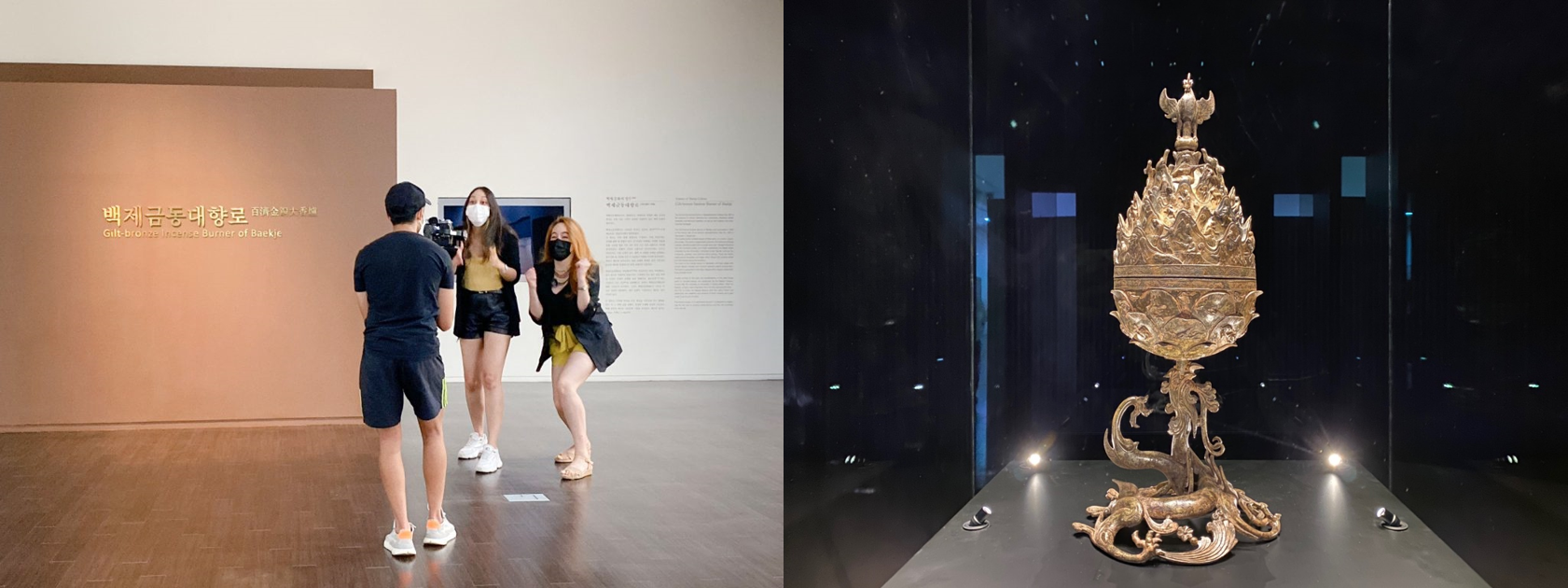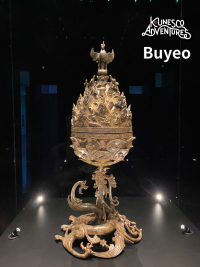History/Culture [K-UNESCO Adventurers] Baekje Historic Areas (Buyeo)
Page Info
Content
| Event Date | 2021-08-17 ~ 2021-08-17 |
|---|---|
| Time | - |
| Venue | Buyeo National Museum, Busosansung fortress, Jeongnim-Saji |
| Registration period | - |
| Announcement of selected participants | - |
| Number of participants | 2 |

With the Buyeo Fam Tour unfortunately being canceled due to the COVID-19 situation,
our best Brazilian duo, Marcella and Amanda went out of their way to introduce us to the wonders of the Baekje Historic Area.
First, they arrived at the Buyeo National Museum.
You could feel the excitement in their eyes as Marcella and Amanda arrived
in front of the Gilt-bronze Incense Burner(Geumdong Daehyangro), the historical symbol of Baekje.
This Gilt-bronze Incense Burner was discovered at the site of a temple from the Baekje Dynasty.
If you look closely, you can recognize the shape of a dragon, with its front paws upright,
biting down on a lotus flower as it supports the body of the incense burner.
The top of the lid is capped with a phoenix, and the lid is encircled by various musicians playing
different instruments in their own unique poses.
The lid portrays an assembly of animals, both real and imaginary, which constitutes a beautiful landscape.
If you visit the museum, make sure to take a look at just
how many different images are engraved onto the golden incense burner.

The museum is decorated with an array of artifacts that are not only displayed inside but also outside of the museum.
It was interesting looking at the stone pagodas, headstones, and Bodhisattva statues.
The cast were impressed with how each statue was displayed in order of their size,
and how well they blended with the modern scenery peeking behind the stone wall.

The next location that Marcella and Amanda visited was Nakhwaam Rock, located in the Busosansung fortress,
a citadel that guarded Sabi, the capital of the Baekje Kingdom.
Legend has it that Nakhwaam Rock was where the royal court women of King Uija, the last ruler of Baekje,
committed suicide by choosing to jump off the cliff rather than surrender themselves
to the Shilla-Tang alliance that conquered the kingdom.
It is said that there were as many as 3000 royal court women that committed suicide,
but the numbers are believed to be somewhat exaggerated.
The name of the rock, Nakhwaam, means the “Cliff of Falling Flowers”,
comparing the fidelity and loyalty of the Baekje women with the appearance of a falling flower petal.

The final destination was Jeongnim-Saji, the site of what used to be an ancient Baekje Temple during the Three Kingdoms Period.
While Baekje used to boast many temples and pagodas in the past, only two stone pagodas remain,
with one being the Five-storied Stone Pagoda of the Jeongnim Temple site, as shown in the photo.
This pagoda faithfully recreates the formation and design of a wooden structure
and is known for its sense of stability and beauty found in its proportions.
On the first floor of the stone pagoda are Chinese letters,
said to have been engraved by the Tang general that conquered the Baekje kingdom.
To see more stories about the Jeongnimsa Temple, make sure to check out the video!
Host & Sponsor : Korean Culture and Information Service
If you want to learn more about the program : http://heritageinkorea.kr/
#KOCIS #KUNESCOAdventures #해외문화홍보원
** All the participants had tested for COVID before the tour.**







